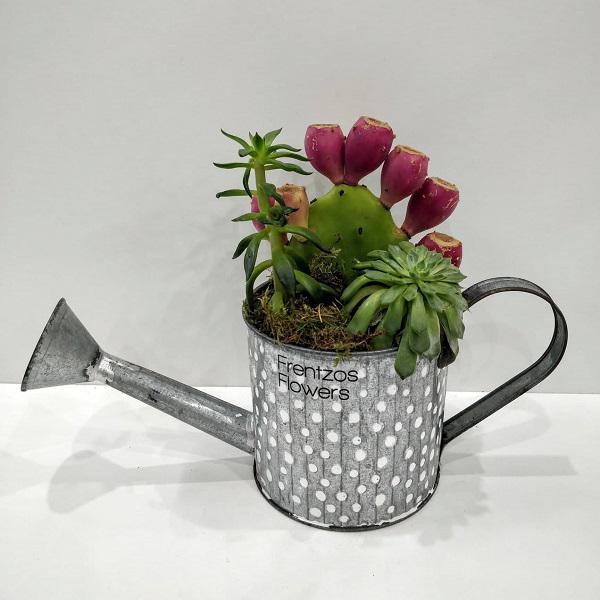Cacti
There are two groups of cacti, the desert cacti and the forest cacti. The former originate from the deserts of America, while the latter have softer foliage (except for the Aporocactus). Both species are extremely hardy, require little care, and are often a plant that collectors love because of their varied shapes and small size. The impression that has been created that cacti get a better shape if left neglected is incorrect. All plants need care, some a little less, some a little more; propagation is very easy, with natural seeds that if planted in shallow containers with good drainage, plenty of light, the right temperature near 18°C and good ventilation, the failure rates are annihilated.
Light – Position – Temperature
Desert cacti need a lot of sun, especially in winter, unlike forest cacti which like to be in shady places, without direct sunlight. Desert cacti thrive in temperatures of 13 – 18°C, and even lower, considering that the desert temperature during the evening hours is low. Forest cacti thrive at similar temperatures, from 13 – 15°C.
Watering – Fertilization
Desert and forest cacti do not need any water from the end of autumn until early spring. After that, water them well, letting them dry out before watering them again.Fertilizing cacti is not a prerequisite for their growth.
Enemies – Diseases
Cacti are susceptible to diseases and pests, especially if they are heavily watered during the winter.The pests of cacti are the following:Root rot, which usually occurs on old forest cacti, and is treated by applying malathion to the soil.Pseudococcus, which occurs insects along the length of the plant, which can be removed with a fine brush dipped in methyl alcohol by soaking the plants with malathion or a diastatic insecticide.Cockroaches, which look like small shells on our cacti, and which can be controlled with insecticide; Red Spider, which creates tiny webs on the cactus, and must be eradicated with a corresponding insecticide; Botrytis, a fungus that attacks the plant or the base of the stem by displaying wet spots of rot. Depending on where the fungus has attacked our plant, we either cut off the affected parts and keep the healthy parts and use a fungicide, or cut off the healthy parts of the plant and use them for propagation. Plants can suffer root rot from too much and frequent watering.
Pachyderms
Colors, shapes and sizes in a wide variety! The best known succulents are the Echeverias with their wonderful metallic colours. Succulents are very hardy and adaptable to weather conditions, but they do not like a lot of water. Their propagation is very easy. Even with one of their leaves a new plant can be created. Cut a leaf from the main plant, let it dry a little, then plant it in a sandy mixture and place it in a warm environment. A very important note for the future of this propagation, do not leave the soil too moist during the rooting period of the plant, because it destroys the roots and the propagation will fail.
Light – Position – Temperature
Sunny places, especially a window with plenty of sunlight is the ideal place for succulents. There are two species of succulents as exceptions to the rule that thrive best in shady places, such as Avorthia and Gasteria. A temperature alternation between day and night makes the growth of succulents an ideal condition. In general, the temperature should be between 13 – 18°C.
Watering – Fertilization
From spring to autumn, water your succulents well, letting them dry out before each watering. During the winter months, reduce watering to a minimum.In winter, we should not use fertilizers for succulents, and from spring to autumn we can use a light liquid fertilizer every week, but even that if necessary.
Enemies – Diseases
Succulents, like cacti, are often affected by diseases, especially if they are watered too much during the winter.The diseases and pests of succulents are pseudococci, root rot, red spider mite and botrytis. Follow the same procedure with insecticides or fungicides, depending on the disease that has caught the plant, as we mention in cacti.

